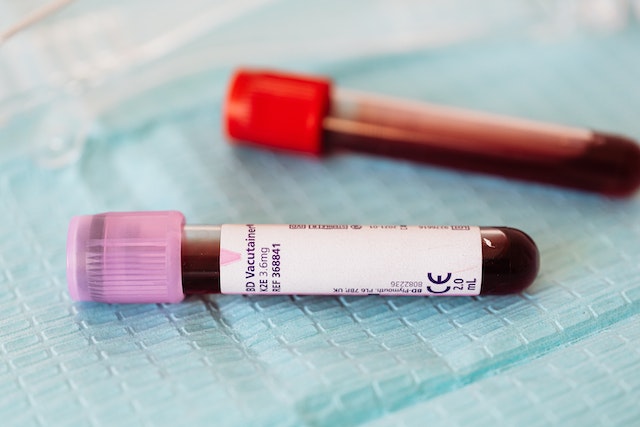
How much blood can you lose? Well, obviously all of it. How much blood can you lose and still function? Depending on your body size, from between 15 to 30%.
We have approximately 5 liters of blood in our bodies, but that varies by size. An average-sized female of 165 cm will have about 4.3 liters and an average-sized male of 182 cm (that’s me), will have about 5.7 liters.
What is blood? There are four parts to blood. They are red blood cells, platelets, plasma, and white blood cells. The red blood cells make up about 45% of our blood and they have a lifecycle of about 120 days. About five billion of them are made in the bone marrow every hour. The red blood cells carry oxygen from the lungs around the body and then they carry carbon dioxide to be removed. Red blood cells are red because they contain hemoglobin, which is a protein that lets them carry oxygen. Platelets float around in the blood and seal up wounds to control bleeding whenever they occur. When you are bleeding through a cut, a signal will be sent out to summon platelets. They will respond to the signal and crowd the wound, plugging it up. This is called blood clotting. Plasma is the liquid part of the blood. Plasma is made of water, proteins, sugars, hormones, and salts. White blood cells are only 1% of the blood but they protect us against illness and infections. When they are needed, the bone marrow can produce more.
So, how much blood can you lose? Up to 15% loss of blood is perfectly fine. When you donate blood, they generally take about half a liter, which is about 10% of most people’s blood. After donating blood, the body will remake the blood volume in about 24 hours. It takes slightly longer to remake all of the red blood cells, but everything will be back to normal in about four to six weeks. Some people may feel a little lightheaded after donating blood, but that usually passes.
If you lose more than 15% of your blood, then you are probably hemorrhaging. That means losing blood from a damaged blood vessel. There are different levels of hemorrhage.
Up to 15% of blood loss is a Class I hemorrhage. Most people have no reactions or symptoms to this much blood loss. 15% is about 750 ml of blood.
Between 15 and 30% blood loss is a Class II hemorrhage. At this point the heartbeat will speed up. Because there is less blood circulating around the body, there is less oxygen. The body tries to compensate by speeding up the heart to pump more blood to where it is needed and speeding up the rate of breathing. The extremities and skin will start to go cold as blood is moved to the organs. People at this stage will feel weak and tired. They will be pale, and their skin will be cool to the touch. If the bleeding is stopped, a Class II hemorrhage is survivable. The body will remake the blood volume and the red blood cells.
Between 30 and 40% blood loss is a Class III hemorrhage. The heart rate will become even faster to try and get oxygen around the body. The limbs will become cold and the smaller blood vessels will constrict to keep as much blood in the core as possible. This is called vasoconstriction. The blood vessels constrict to try to increase the blood pressure so that it can reach the brain and the torso. The person’s mental state will suffer and passing out is likely. There isn’t enough blood pressure to get oxygen to the brain fast enough. The body can regenerate this much blood, but in order to survive in the short term, a blood transfusion is probably necessary.
Over 40% blood loss is a Class IV hemorrhage. There isn’t enough blood to get oxygen through your body. Your heart rate will go even higher, and your blood pressure will plummet. The person will be disorientated and confused. The person will probably be hyperventilating. Without an immediate blood transfusion, the brain will shut down, leading to coma, and the organs will fail from lack of oxygen, leading to death.
So, how much blood can you use? 15% with no problem. 30% and you won’t feel good, but your body can recover. Up to 40% and you are going to need a blood transfusion. Over 40% and you will be lucky to survive. And this is what I learned today.
Sources
https://www.oneblood.org/about-donating/blood-donor-basics/what-is-blood/
https://www.redcrossblood.org/donate-blood/dlp/red-blood-cells.html
https://www.medicaldaily.com/breaking-point-how-much-blood-can-human-body-lose-350792
https://www.healthline.com/health/how-much-blood-can-you-lose#fainting
https://www.ncbi.nlm.nih.gov/books/NBK542273/
https://www.medicalnewstoday.com/articles/321122#shock-and-blood-loss

[…] too late, and parts of the brain may already have died. This is one of the reasons you die if you bleed to […]
[…] have approximately 4.5 to 6 liters of blood, depending on our size. Blood is generally about 10% of our body weight. Blood is made up of red […]